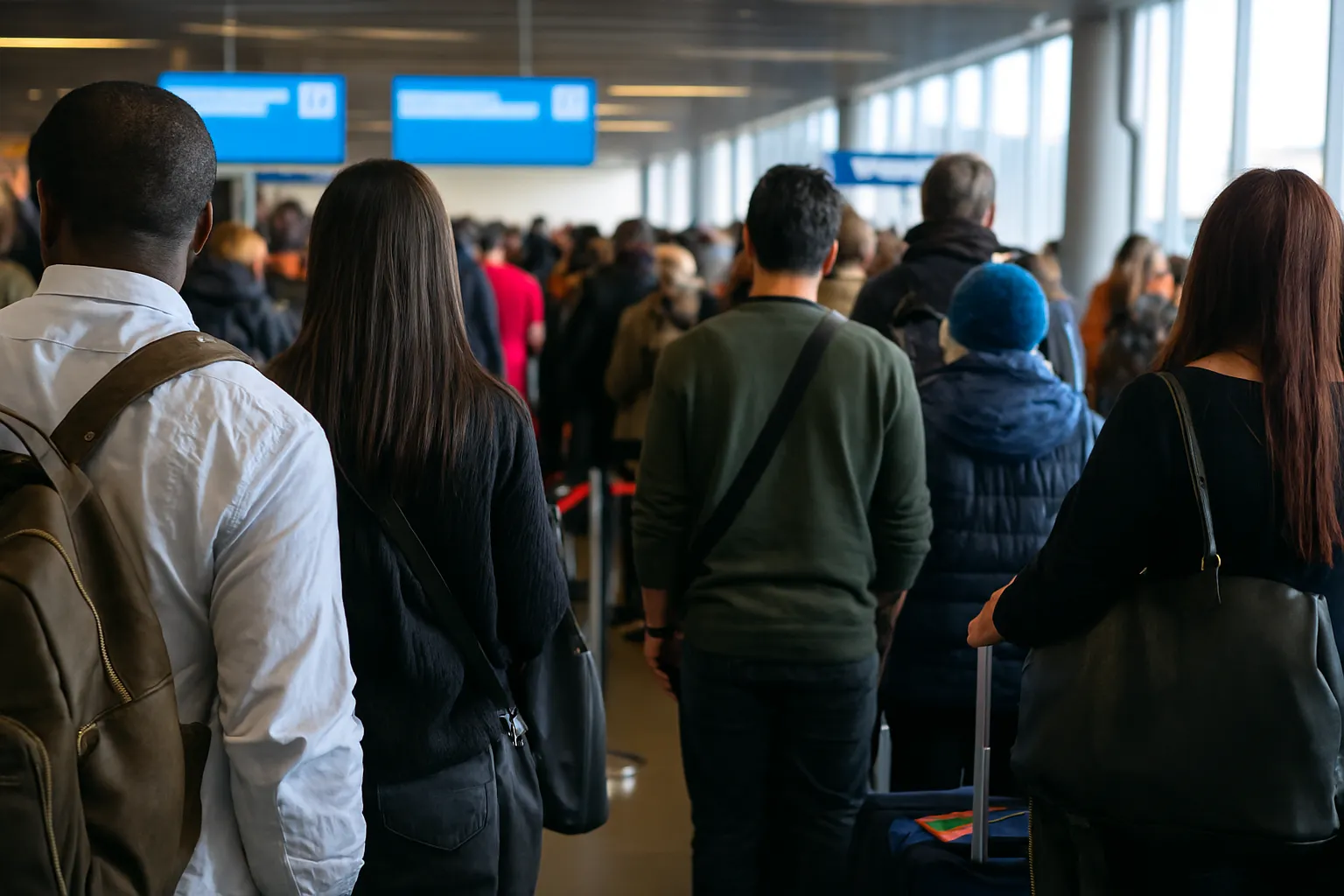International Immigration Laws: Trends and Challenges in 2025
In 2025, international immigration laws are evolving rapidly in response to global pressures. From geopolitical instability and economic demands to technological innovation and humanitarian crises, nations are rethinking how they manage migration. This article explores the key trends and challenges shaping immigration policy around the world, offering a comprehensive look at how governments, businesses, and individuals are adapting to a shifting landscape.

Geopolitical Instability and Migration Patterns
Geopolitical unrest continues to be a major driver of migration. Conflicts in regions like Ukraine, Sudan, and Venezuela have led to mass displacement, forcing neighboring countries and global powers to reassess their refugee and asylum policies.
In response, many governments are tightening border controls and increasing security screenings. For example, the European Union has proposed new “return centres” to manage irregular migration, while Sweden is considering longer detention periods for deportees. These measures reflect a growing tension between national security and humanitarian obligations.
Key impacts include:
- Increased deportations and detention periods
- Stricter visa screening and biometric tracking
- Expansion of refugee quotas in select regions
Economic Pressures and Labor Shortages
Despite economic uncertainty, demand for foreign labor remains high. Sectors such as healthcare, technology, and renewable energy are experiencing acute labor shortages. In the United States, the healthcare system is short over 120,000 doctors, while India’s tech industry lacks millions of skilled workers.
To address these gaps, countries are expanding visa pathways for in-demand occupations. The European Union’s battery sector alone requires hundreds of thousands of skilled employees, prompting streamlined immigration processes for engineers and technicians.
Policy responses include:
- Fast-track visas for critical sectors
- Local labor market testing requirements
- Hybrid work models to attract global talent
Technological Advancements in Immigration Systems
Technology is transforming immigration management. In 2025, governments are increasingly adopting AI-driven enforcement, digital visa systems, and biometric tracking to streamline processes and enhance compliance.
Countries like Taiwan and Luxembourg have implemented digital entry/exit systems that integrate with national security databases. AI is being used to detect anomalies in visa applications and flag potential risks. While these innovations offer efficiency, they also raise concerns about data privacy and algorithmic bias.
Emerging technologies include:
- Digital visa platforms
- Facial recognition and biometric ID
- AI-based compliance monitoring
Compliance Risks and Enforcement Trends
Compliance has become a central issue in immigration law. Penalties for noncompliance have surged - fines increased by 200% in the UK, 300% in Luxembourg, and 400% in Taiwan. Governments are aggressively pursuing violators using technology and inter-agency collaboration.
Businesses face heightened scrutiny, especially regarding right-to-work documentation and labor market testing. Immigration audits are more frequent, and companies must maintain accurate records to avoid penalties.
Best practices for employers:
- Regular internal compliance audits
- Employee status tracking systems
- Cross-departmental collaboration
Humanitarian Challenges and Refugee Policies
Humanitarian migration remains a contentious issue. The reception of Ukrainian refugees continues to spark debate across Europe. Some countries have adopted open-door policies, while others are tightening entry requirements. The United States suspended its refugee admissions program in early 2025, raising concerns among humanitarian organizations.
Balancing humanitarian obligations with national interests is a delicate task. International bodies like the UNHCR are urging countries to uphold refugee protections, while local governments grapple with resource constraints and public opinion.
Policy dilemmas include:
- Balancing security with compassion
- Managing public sentiment and misinformation
- Ensuring adequate support for refugees
Regional Shifts and Bilateral Agreements
Regional dynamics are reshaping immigration laws. In Asia, countries like Japan and South Korea are revising policies to attract foreign talent amid aging populations. In Africa, regional blocs are promoting intra-continental mobility to boost economic integration. Latin America is witnessing increased migration due to political instability.
Bilateral agreements are becoming more common. For example, Canada and India have signed new mobility accords to facilitate skilled worker exchange. These agreements help streamline visa processes and foster economic collaboration.
Notable agreements:
- Canada–India Skilled Worker Accord
- EU–Tunisia Migration Partnership
- ASEAN Mobility Framework
Legal Reforms and Legislative Updates
Several countries are introducing major legal reforms. France is proposing a new immigration law to extend detention periods for deportees and tighten asylum procedures. The UK is revising its points-based system to prioritize high-demand occupations and reduce bureaucratic delays.
These reforms aim to modernize immigration frameworks and respond to current challenges. However, they also face criticism from civil society groups concerned about human rights and due process.
Key legislative changes:
- France’s proposed detention extension
- UK’s points-based system overhaul
- U.S. refugee program suspension
Corporate Mobility and Talent Strategy
Global businesses are rethinking their talent strategies in light of immigration challenges. Workforce resilience is now a top priority, with companies developing contingency plans for geopolitical disruptions. Remote work and hybrid models are being used to maintain productivity across borders.
Employers are also investing in immigration expertise, hiring legal consultants and using digital platforms to manage employee mobility. By aligning immigration strategy with business goals, companies can navigate regulatory complexity while attracting top talent.
Strategic approaches:
- Remote work as a mobility solution
- Investment in immigration technology
- Crisis management planning
Public Sentiment and Political Influence
Public opinion plays a significant role in shaping immigration laws. In 2025, political discourse around migration is polarized, with populist movements advocating for stricter controls and progressive groups pushing for inclusivity. Media coverage and social platforms amplify these debates, influencing policy decisions.
Governments must navigate this complex landscape, balancing electoral pressures with long-term national interests. Transparent communication and public education campaigns are essential to foster informed dialogue and reduce xenophobia.
Influencing factors:
- Media narratives and misinformation
- Electoral cycles and political agendas
- Grassroots advocacy and civil society
Future Outlook and Global Cooperation
Looking ahead, the future of international immigration laws hinges on global cooperation. Multilateral frameworks, such as the Global Compact for Migration, offer a blueprint for coordinated action. However, implementation remains uneven, and geopolitical tensions often hinder progress.
To build a resilient and humane immigration system, countries must prioritize collaboration, innovation, and inclusivity. Shared data systems, joint enforcement protocols, and harmonized visa standards can help streamline mobility while safeguarding rights.
Recommendations for 2025 and beyond:
- Strengthen multilateral institutions
- Promote data-sharing and interoperability
- Invest in inclusive policy design
Conclusion
In 2025, international immigration laws are at a crossroads. The interplay of geopolitical, economic, technological, and humanitarian factors is reshaping how nations manage mobility. While challenges abound - from compliance risks to political polarization - there are also opportunities for innovation and cooperation. By embracing inclusive policies, leveraging technology, and fostering global partnerships, the world can build a more equitable and effective immigration system for the future.











